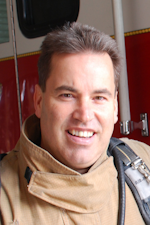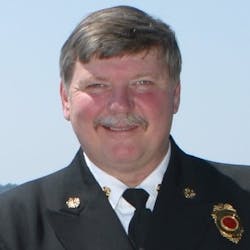Community Risk Reduction: What Makes a CRR Program Successful?
A traditional fire marshal from a department of 40 personnel that operates out of three fire stations retires. The department takes the opportunity to expand the fire marshal job description to include fire prevention education, because, after all, the majority of fires, fire losses and risks to firefighters were occurring in homes. Although this service delivery expansion occurred before the term community risk reduction (CRR) was even thought of and when full-time public educators were very few, the principles of success for the endeavor were the same as they are today.
To fill the fire marshal position, which lacked existing educational programs and a roadmap to build upon, a firefighter who had an instructional background—but lacked public educational knowledge or experience—was promoted.
Until this point, the department’s educational efforts consisted of the occasional station tour and requested visit to an elementary or high school classroom, where firefighters showed videos and handed out stickers. The internet was very basic, and social media had yet to be invented, which significantly limited professional networking. The only materials that were available were videos (Beta and VHS), posters and pamphlets.
This fire department was suppression-orientated. It was held in high regard across the state in which it operated for its progressive fireground approach. As such, public education wasn’t perceived by the rank and file members as their responsibility, and it showed.
As the department began its new public outreach, the backlash from the floor was immediate and intense. From the firefighters to the officers, there were continual objections about having to disrupt their day to perform educational duties that they perceived as the fire marshal’s responsibility. Public education props were sabotaged. “Critical” tasks and training were scheduled coincidental to prescheduled education events. Every officer’s meeting involved a concerted effort to suspend educational tasks that were required from the floor and to return them to the fire marshal’s office. The argument then—as it often can be today—was that members and officers “didn’t have the time or resources” to do it all.
Chances of success?
Over time, very slowly and, often, painfully, this began to change. Without a program upon which to build or a means for networking, and with fire service classes, conferences and periodicals focusing on suppression and training, the department felt its way through the dark. Through trial and error, through successes and failures, the department’s educational program was born and began to grow, and ever so slowly, the rank-and-file support began to grow with it as well.
Within seven years, with no increase in budget, the department had continuous and successful educational programs from daycare to college, from general adult programs to specific target hazard programs, including for Spanish-speaking citizens. The results? A reduction in fires of more than 60 percent; no commercial building loss; no fire deaths; seven confirmed saves where citizens informed the department afterward that what they learned or were provided made a difference; two state awards for public education excellence; several local awards, including a prestigious community partnership award; and national recognition.
A communitywide study of this department, which was performed by the International City/County Management Association, determined that the department had one of the most progressive prevention programs that it ever saw and recommended that more resources be provided for the program.
Why so successful?
The underlying key to this department’s success wasn’t the educator but the fire chief. It was the chief’s vision and goal to have a strong department-based educational component at the core of his department’s service delivery. However, many chiefs have visions, yet not all come to fruition, particularly when the chiefs navigate in uncharted territory and key on a matter that isn’t popular or isn’t a priority in the fire service. That said, this chief always was known for putting his firefighters and citizens first. He truly believed that an educational program not only was important to a reduction in the community’s fire loss but also to a reduction in risk to his firefighters.
This unwavering focus on his firefighters and on the citizens, combined with his 40 years of commitment to the fire service and all of the experience that it provided to him, enabled this chief’s vision to be unshakable and undebatable. This plus his courage to withstand the initial departmental backlash provided a solid foundation that enabled him to professionally—and quickly and effectively—address dissent.
His premise was simple, objective and unarguable: The department’s purpose was to efficiently serve the community and to save lives and property. His responsibility was to support his firefighters in accomplishing this as safely as possible, and public education (which would become known as CRR) was an important means to achieve this based on solid data and supported by the department’s own mission statement.
It became well-known throughout the department that those who disagreed were free to seek employment elsewhere with his strong reference and recommendation, but if they chose to stay, they must accept that this was the department’s course.
The fire chief truly believed in his responsibility and in the end result of his program. This enabled him to drive through that storm to lead his department, which became recognized for its innovative fire and risk prevention programs, just as it was for its progressive approaches to work on the fireground.
CRR today
CRR has grown in popularity, but I contend that this growth is based more on the International Organization for Standardization, or ISO, awarding credit for programs (coincidental to CRR’s explosion) and on public relations value than it is on CRR being embedded and supported within departmental operations as a core belief of departmental leadership. To lack the latter and the drive and commitment that comes with it minimizes success if not outright results in failure and, ultimately, prompts inefficient use of taxpayer dollars. Subsequent failures can’t help but to reinforce the misbelief that community risk reduction doesn’t work and to undermine the program and the needed support from department members and government officials alike.
Although fire chiefs might want a community risk reduction program, many are completely unaware of what such a program requires to be successful and/or the type of leadership that’s required to make it so. Furthermore, many chiefs, unfortunately, are unprepared to properly support a CRR program so that it can reach its full intent and purpose.
Saving lives and property, efficiently and proactively serving the community, and ensuring that “everyone goes home” must be core beliefs and the base upon which a CRR program is built, driven and supported. CRR isn’t simply a line that’s included in a department’s mission and vision statement. Neither is it a purpose for positive media results and abstract numbers. A properly supported community risk reduction program enhances the department across the board, from justification in budgeting and resource allocation, to more efficient and safe emergency scene operations at a reduced cost.
Physical courage on the emergency scene is witnessed all of the time, but the internal courage that’s required to support and drive a successful CRR program truly will test a chief officer and justify the bugles that adorn the uniform. A successful CRR program can leave a lasting legacy of a strong, resilient community and a long list of healthy firefighters who reach their retirement, which, after all, is the very purpose of putting on those bugles.
“Leadership is the capacity to translate vision into reality.”—Warren Bennis
A CRR Champion
Wendell Wilburn retired after 28 years as the fire chief for the city of Beaufort, SC, and after almost 40 years in the fire service, starting when he was a teenager as a volunteer in the mid-1970s. He served as the past president of the South Carolina State Firefighters Association, the South Carolina State Association of Fire Chiefs and the Beaufort County Fire Chiefs Association. Wilburn was appointed by several South Carolina governors to the Firefighter Mobilization Oversight Committee and is a recipient of the medal of honor for rescuing a wounded police officer while under fire from a concealed sniper.
In the final year of his department’s efforts:
- Public education events conducted: 482
- Citizens reached: 11,690
- Smoke alarms installed: 117 in 68 homes
- Citizens trained in fire extinguisher use: 663
- Grant-installed home fire extinguishers: 49
- Schools that received fire safety education: 4 out 4 elementary schools

Daniel Byrne
DANIEL BYRNE is a community support officer for the Burton Fire District, Beaufort County, SC, and a retired assistant fire chief of training for the Georgia Air National Guard 165th Fire Department. A third-generation firefighter, he holds an associate degree and a bachelor’s degree in fire science as well as a master’s degree in public administration and disaster management. Byrne is an alumnus of the National Fire Academy. He received state and local awards for public relations and educational programs as well as community partnerships and served as a conference presenter and keynote speaker.






